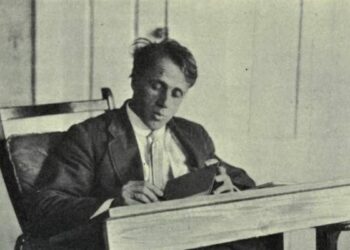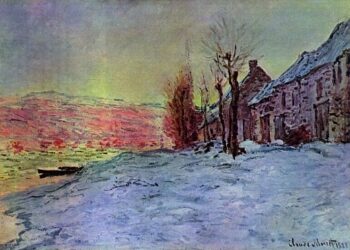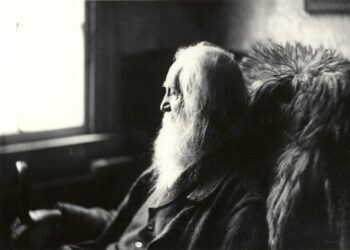The heart asks pleasure first poem analysis
The Heart asks Pleasure first poem meaning, The heart asks pleasure first poem meaning in hindi, ‘The Heart Asks Pleasure First’ by Emily Dickinson, The heart asks pleasure first theme,
The Heart Asks Pleasure First by Emily Dickinson stands as a poetic testament to the intricate and often paradoxical nature of the human heart’s desires. Written by one of America’s most renowned poets of the 19th century, Emily Dickinson, the poem encapsulates a profound exploration of pleasure, pain, and the contemplation of mortality. Through succinct yet evocative language, Dickinson takes the reader on a journey that traverses the diverse landscape of human emotions, offering a poetic lens through which to examine the complex yearnings of the heart.
The Heart Asks Pleasure First Poem Summary
- The heart asks pleasure first,
- The poem begins with a direct statement about the heart seeking pleasure as its primary desire. This sets the tone for the exploration of human emotions and desires.
- And then, excuse from pain;
- After seeking pleasure, the heart desires relief from pain. The poet introduces the theme of pain and suggests that pleasure serves as a form of escape or respite.
- And then, those little anodynes
- Anodynes are substances that alleviate pain. Here, the poet introduces the idea that there are small comforts or pleasures that serve as remedies for the hardships of life.
- That deaden suffering;
- These “little anodynes” are described as having the power to numb or lessen the intensity of suffering. The poem implies that seeking pleasure is a way to cope with life’s challenges.
- And then, to go to sleep;
- Sleep is presented as a further escape or release. After seeking pleasure and relief from pain, the heart desires the tranquility of sleep as a way to disconnect from the world.
- And then, if it should be
- The poem introduces a conditional statement, suggesting that the preceding desires may not always be fulfilled.
- The will of its Inquisitor,
- The “Inquisitor” is a term suggesting a probing or questioning force. The will of this force is something the heart must contend with or submit to.
- The liberty to die.
- In the face of the Inquisitor’s will, the ultimate desire becomes the freedom to die. Death is presented as a form of liberation from the struggles and pains of life.
The Heart Asks Pleasure First Poem
The heart asks pleasure first
And then, excuse from pain-
And then, those little anodynes
That deaden suffering;
And then, to go to sleep;
And then, if it should be
The will of its Inquisitor,
The liberty to die.
The heart asks pleasure first Themes
Desire and Pleasure:
The primary theme of the poem revolves around the human heart’s innate desire for pleasure. Dickinson explores the pursuit of joy as a fundamental aspect of human nature, suggesting that the heart seeks pleasure as a primary motivation.
Relief from Pain:
Linked to the pursuit of pleasure is the theme of seeking relief from pain. The poem suggests that pleasure serves as a means of escape or respite from the hardships and challenges of life. The desire for pleasure is, in part, a response to the need for solace from pain.
Also Read-
- The Emperor of Ice-Cream Poem Summary and Themes
- My Grandmother’s House Poem Summary and Analysis
- Let America Be America Again Poem Summary line by line
Small Comforts and Anodynes:
Dickinson introduces the concept of “little anodynes” — small comforts or pleasures that have the power to deaden suffering. This theme emphasizes the importance of finding solace in simple joys and the ways in which individuals cope with life’s difficulties.
Sleep as Tranquility:
The desire for sleep is presented as a further stage in the progression of the heart’s desires. Sleep is portrayed as a form of tranquility and escape, a state that allows individuals to temporarily disconnect from the challenges of waking life.
The Inquisitor and External Forces:
The term “Inquisitor” introduces the theme of external or internal forces that shape the will of the heart. This mysterious force adds complexity to the poem, suggesting that the heart must contend with external influences that impact its desires.
Contemplation of Death:
The poem concludes with the contemplation of death as the ultimate freedom. Death is presented as a release from the struggles and pains of life, highlighting the existential theme of mortality and the inevitability of the human experience.
Complexity of Human Emotion:
Throughout the poem, Dickinson explores the intricate and often conflicting nature of human emotions. The progression of desires reflects the complexity of the human experience, from the pursuit of pleasure to the contemplation of life’s inevitable end.
Freedom and Liberation:
The overarching theme of freedom is manifested in different ways throughout the poem. From the pursuit of pleasure to the contemplation of death, there is a consistent thread of seeking liberation — whether through momentary joys or the ultimate release from earthly struggles.
Existential Reflection:
The poem invites readers to engage in existential reflection, prompting them to contemplate the purpose of pleasure, the meaning of pain, and the transient nature of life. It raises questions about the human condition and the ways in which individuals navigate the complexities of existence.
Conclusion
The Heart Asks Pleasure First by Emily Dickinson offers a profound exploration of the human heart’s desires, the pursuit of pleasure, and the ways in which individuals seek solace from pain. The poem takes the reader on a journey through various stages of emotional longing, from the simple pursuit of pleasure to the desire for relief, the search for comfort in small joys, and the ultimate contemplation of death as a form of liberation. Through concise and evocative language, Dickinson captures the complexity of human emotions and the ways in which individuals navigate the challenges of existence.
The thematic progression in the poem reflects the universal human experience of seeking happiness, finding coping mechanisms, and, at times, confronting the inevitability of mortality. Dickinson’s exploration of the heart’s desires resonates with readers, inviting contemplation on the nature of pleasure, pain, and the human condition.The Heart asks Pleasure first poem meaning, The heart asks pleasure first poem meaning in hindi, ‘The Heart Asks Pleasure First’ by Emily Dickinson, The heart asks pleasure first theme,
FAQ:
1. Who is the author of “The Heart Asks Pleasure First”?
The poem “The Heart Asks Pleasure First” is attributed to Emily Dickinson, an American poet known for her unique voice and exploration of profound themes in her poetry.
2. What is the central theme of the poem?
The central theme revolves around the human heart’s desires, particularly the pursuit of pleasure, the quest for relief from pain, and the contemplation of death as a form of liberation.
3. How does the poem progress thematically?
The poem progresses through various stages of desire, starting with the pursuit of pleasure, seeking relief from pain, finding comfort in small joys, and ultimately contemplating the freedom that death may bring. It reflects the nuanced and evolving nature of human emotions.
4. What is the significance of the “Inquisitor” in the poem?
The term “Inquisitor” in the poem represents a probing or questioning force, possibly symbolizing external or internal challenges that the heart must confront. The will of this Inquisitor adds a layer of complexity to the poem’s exploration of desire and mortality.
5. How does the poem use language to convey its themes?
Emily Dickinson employs concise and evocative language to convey deep emotional and philosophical themes. The poem’s brevity enhances its impact, inviting readers to reflect on the meaning of pleasure, pain, and the human experience.

















